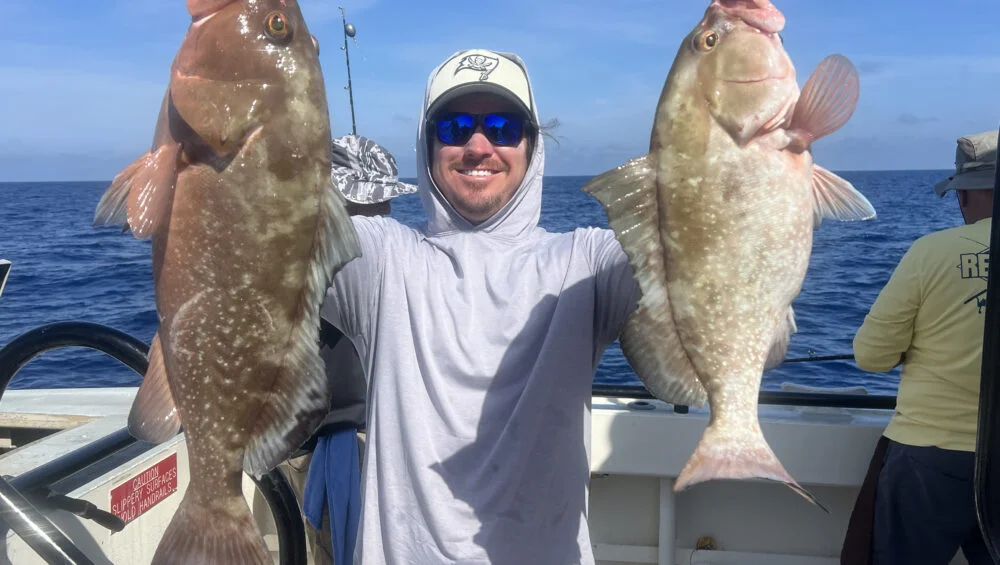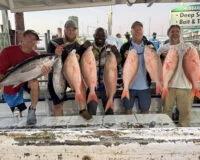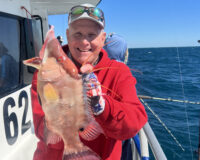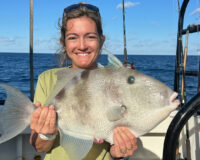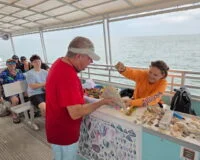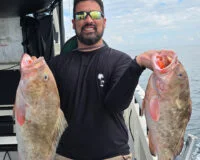Inshore Fishing Report
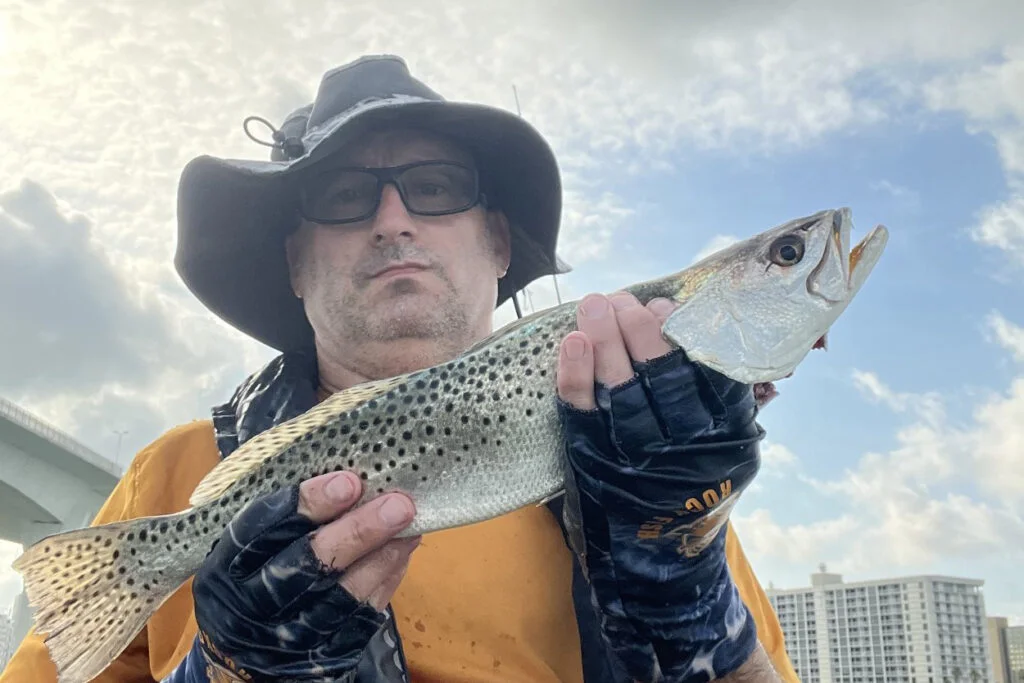
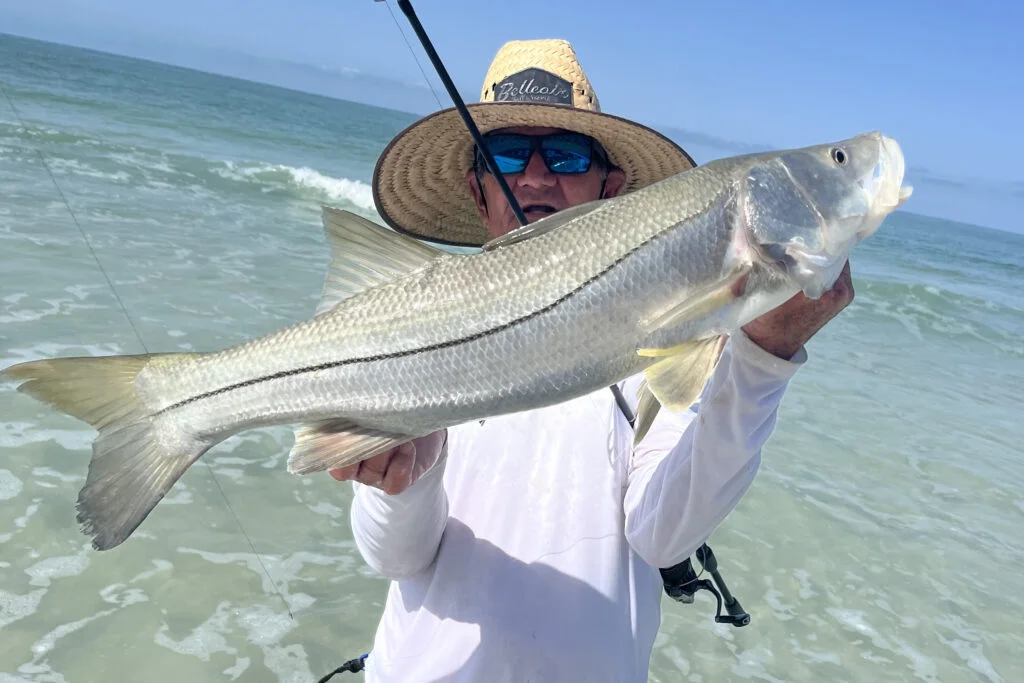
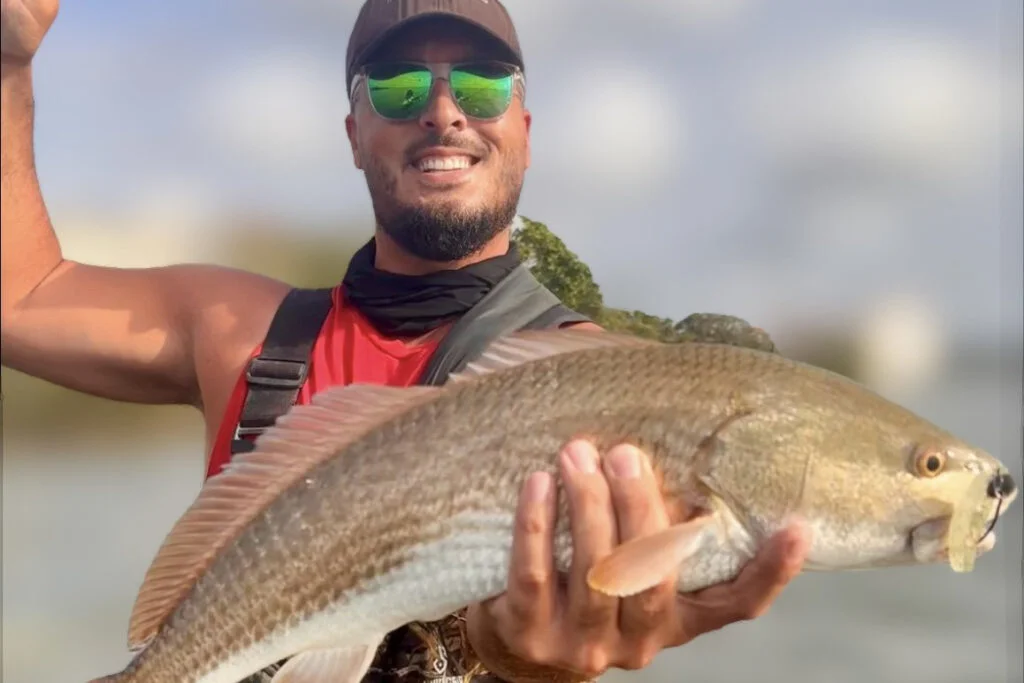
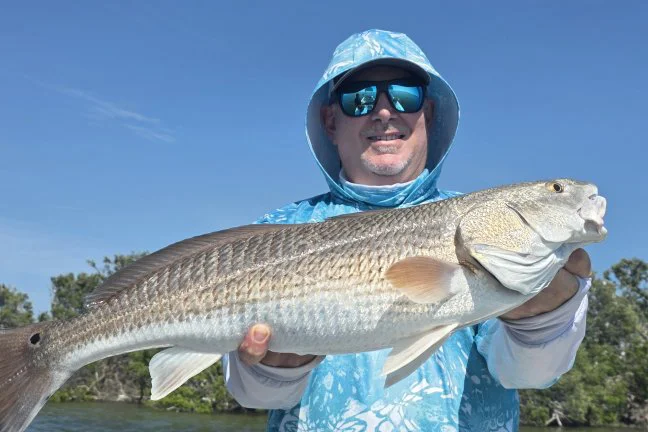
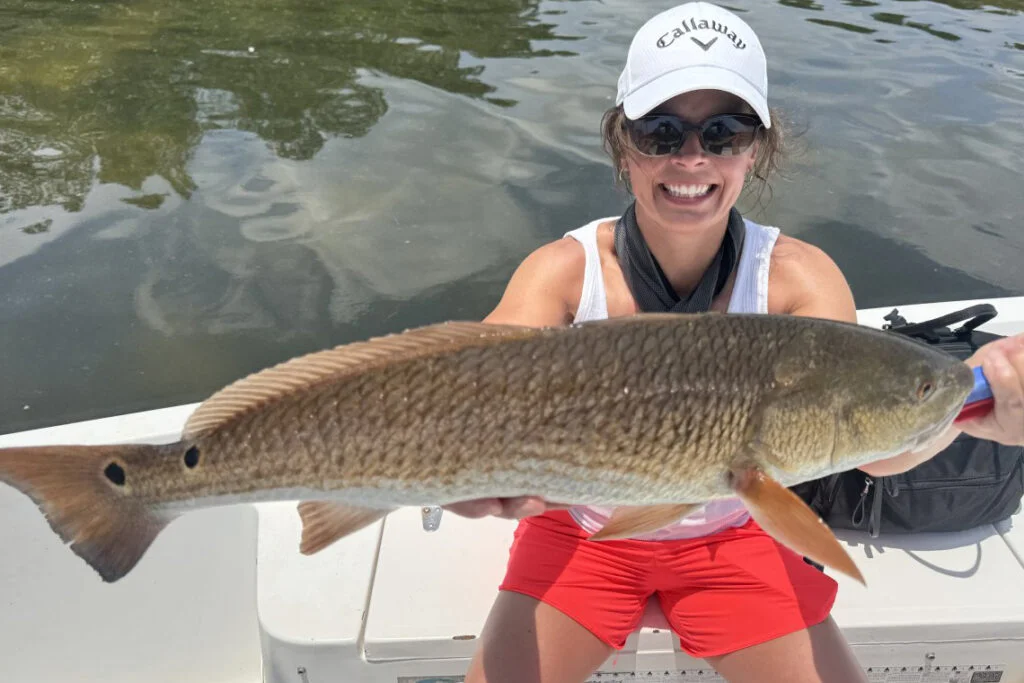
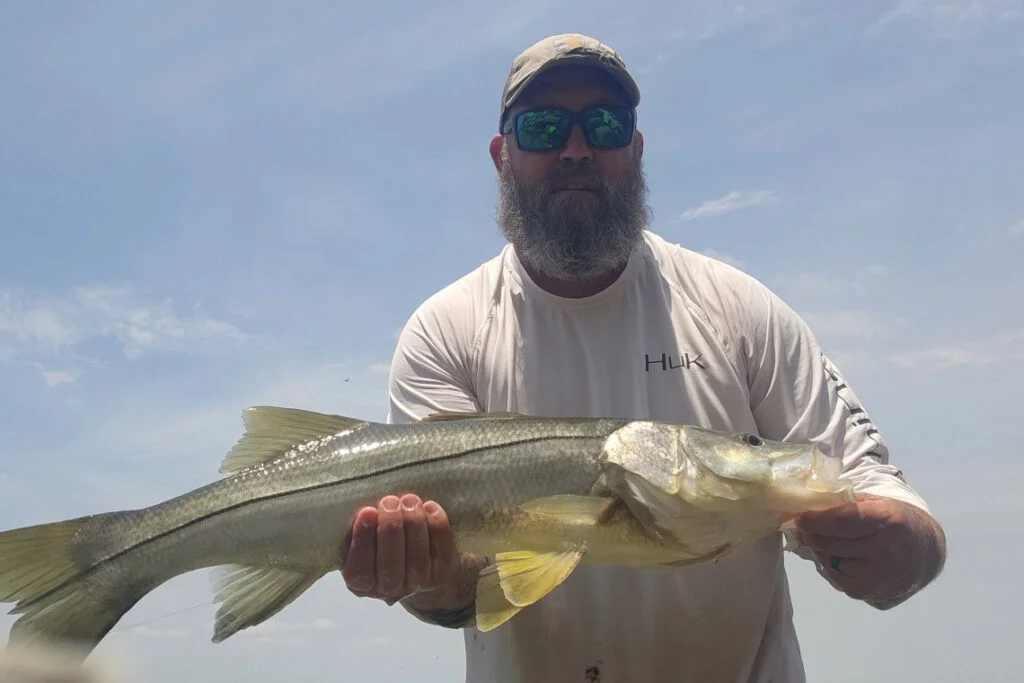
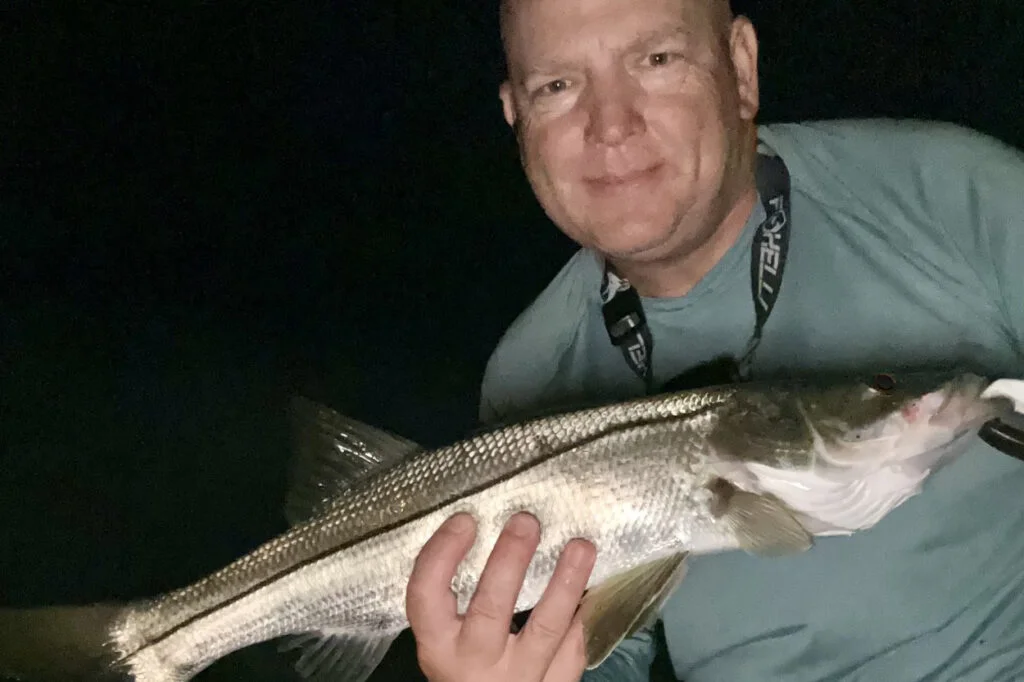
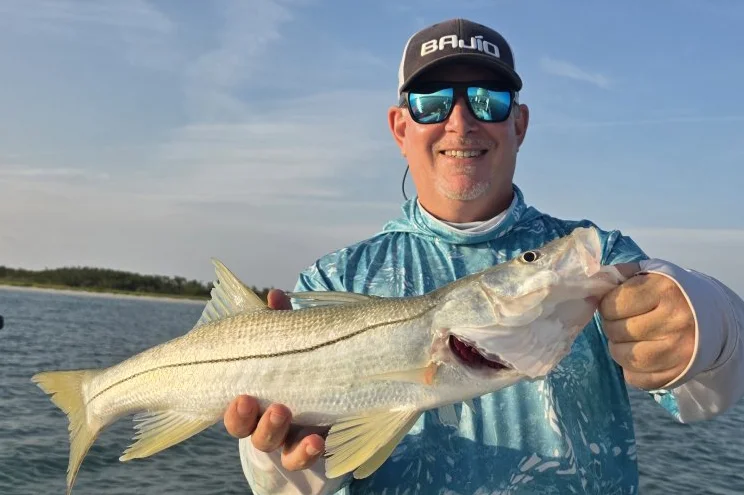
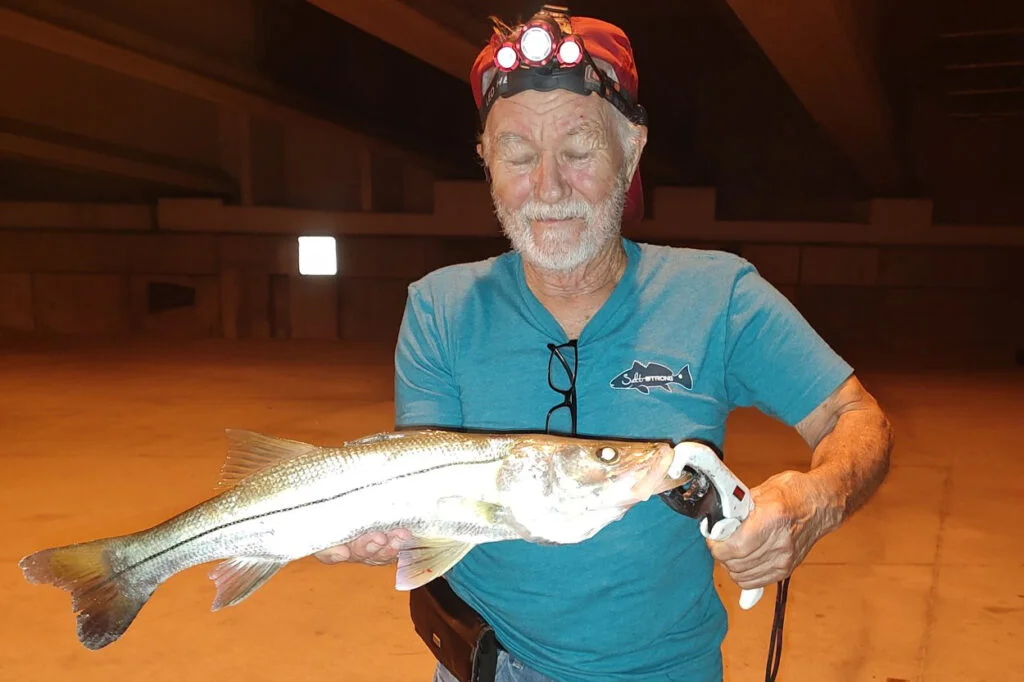
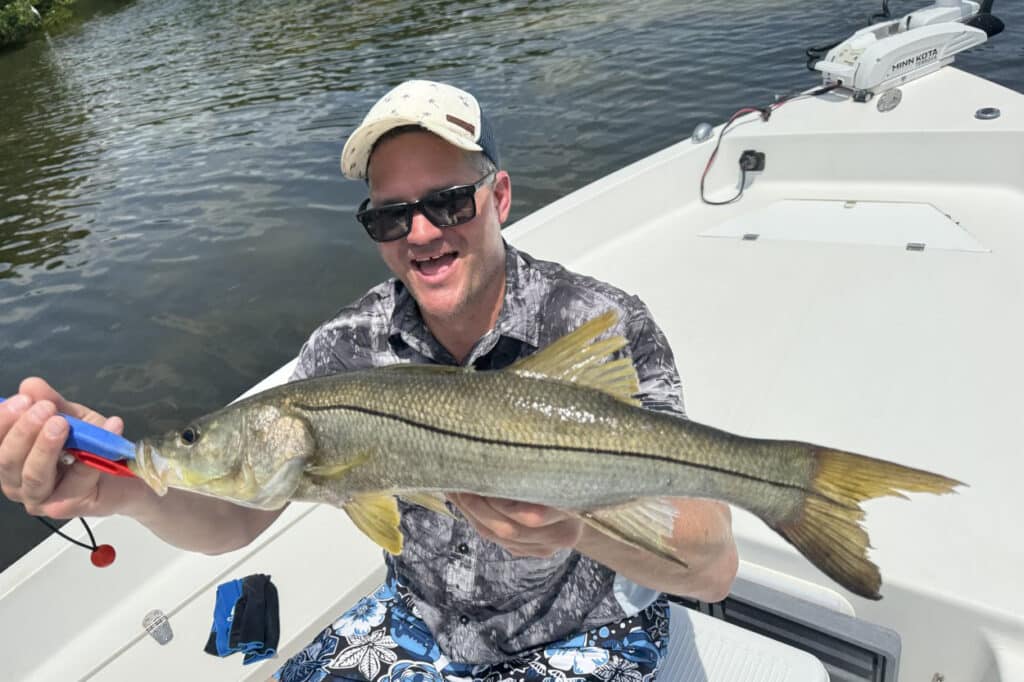
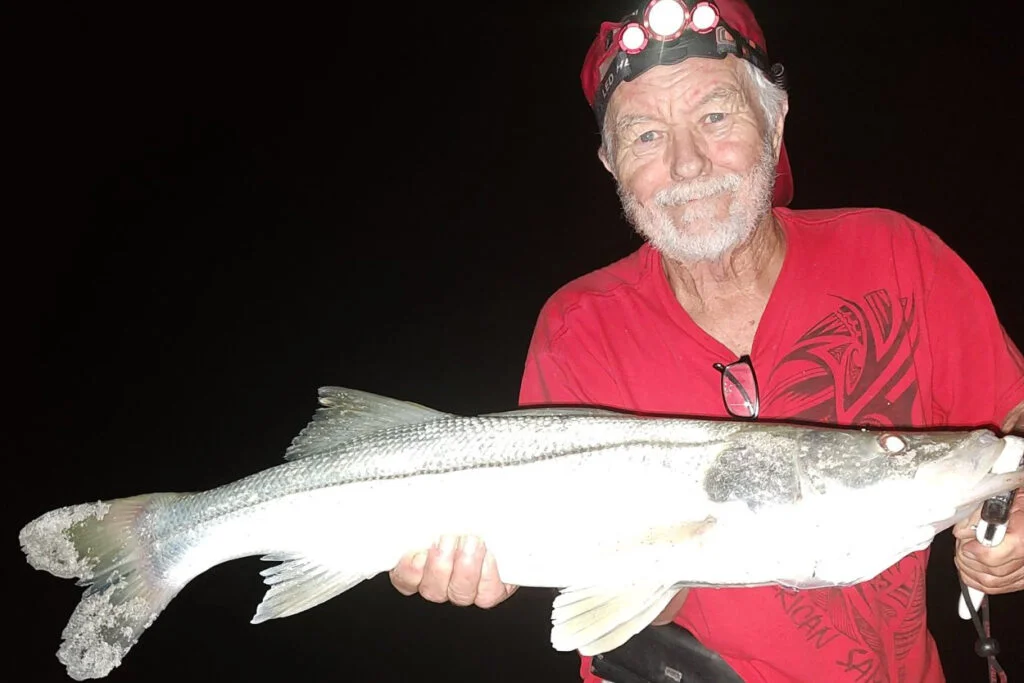
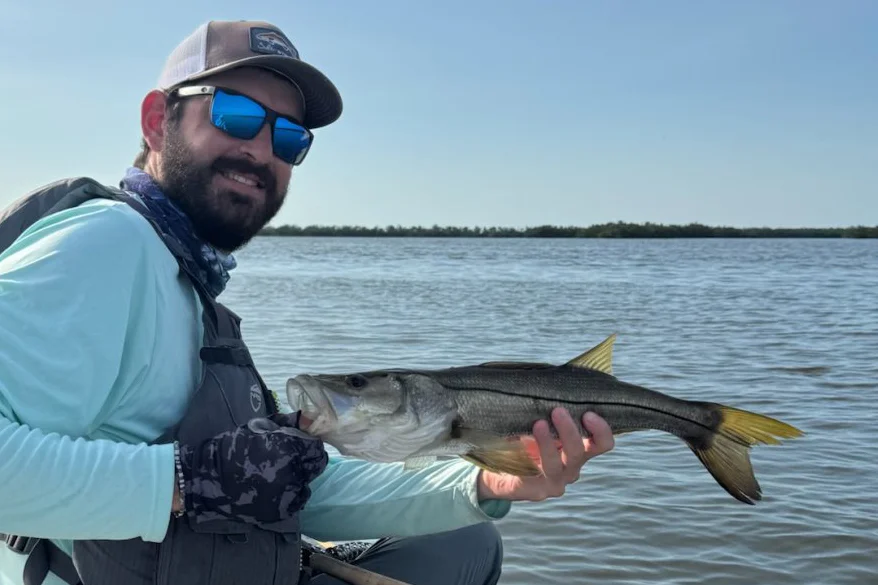
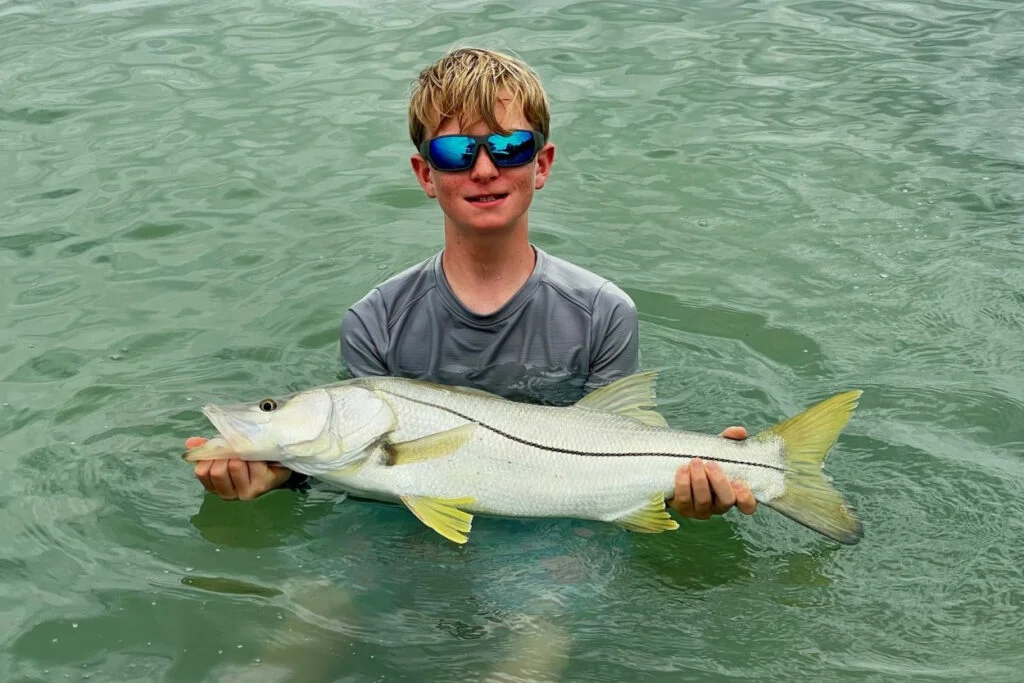
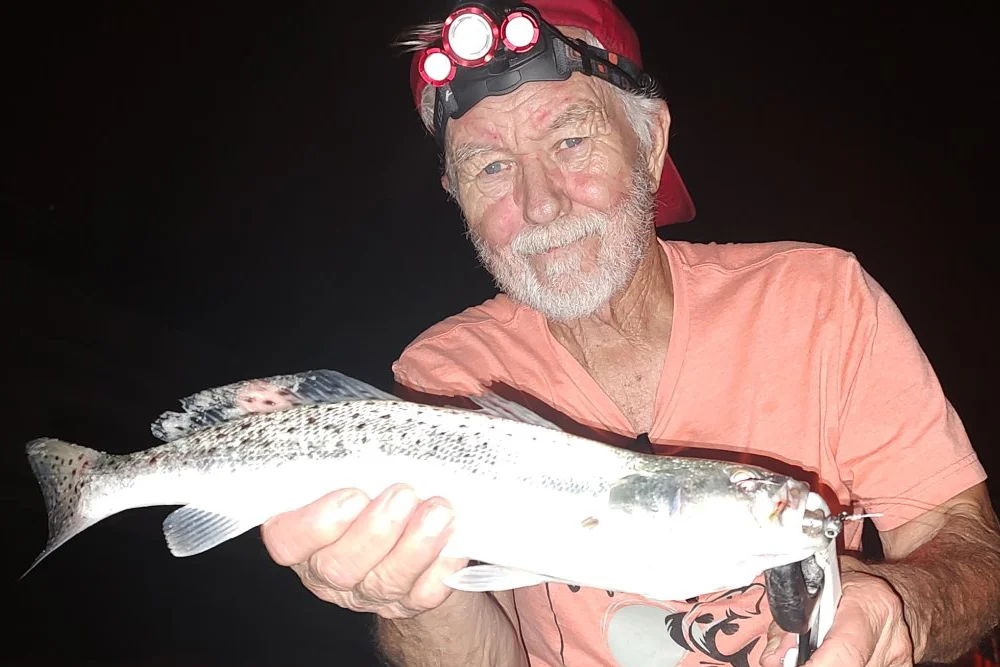
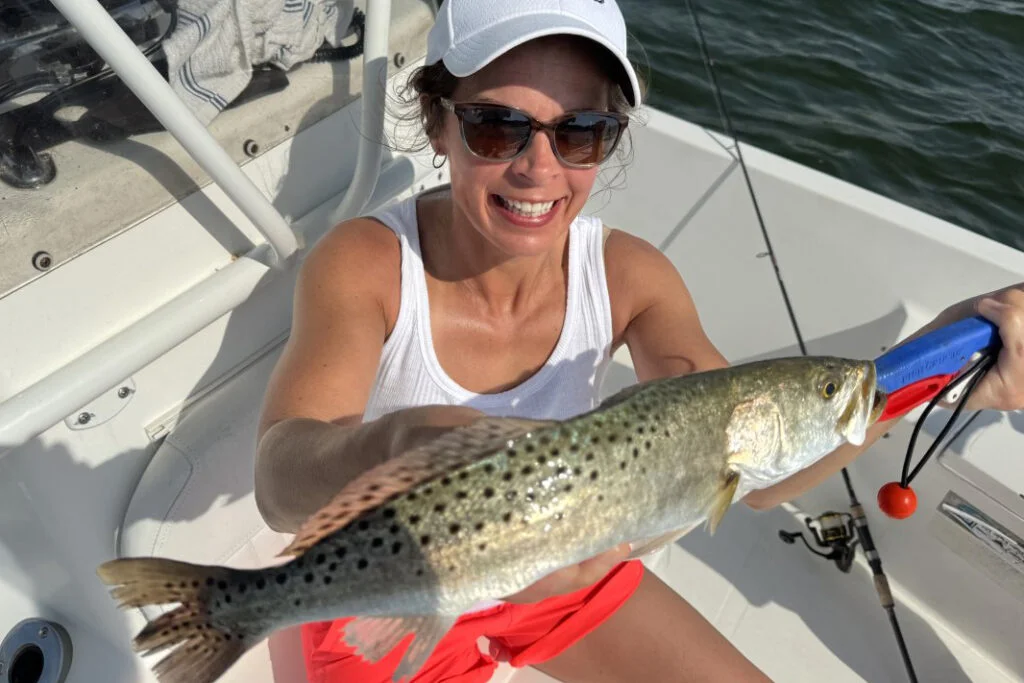

Snook have really moved now, and are active on the beaches and around the passes like a more typical summer time pattern. Plus, they are starting to feed more actively as water temps rise. We’re seeing more fish staging along the passes, points, and deeper edges on their way toward the beaches too. Fishing around the solunar majors or minors can help capitalize on their short feeding windows.
Redfish continue to show strong across the flats, mangrove shorelines, and oyster bars. The early morning and late evening bite around the mullet schools has been the most productive. Also, fishing the mangroves at high tides with big chunks of dead cut bait works well too!
Trout action is solid with some impressive average sizes still being seen. Target the edges, potholes, and sandy drop-offs during cooler parts of the day for the best chance at success.
Tarpon are showing up more steadily now too. We’ve spotted them moving along the beaches and staging at bridge and pass mouths, especially during strong incoming tides.
Mackerel are thick inshore, chasing bait along channel edges and around the piers. Fast-moving flashy lures or free-lined live baits are producing best.
Mangrove snapper are starting to feed heavier with warming waters and abundant bait. Look for them around bridges, rock piles, and dock pilings.
Pompano remain spotty but are being caught in sandy stretches near passes and around the surf zones. Small jigs bounced near the bottom are the go-to method.
Fishing Tips
- Snook: Use live baits like greenbacks, threadfins, and shrimp, or try flair hawks and soft plastics at night.
- Redfish: Look for them around mangroves, oyster bars, and flats, and use dead baits during higher tides.
- Trout: Target them with soft plastics, white bait, and shrimp around deeper flats and potholes.
- Tarpon: Target them during the full moon with crab flushes, making it an ideal time to target them.
- Flounder: Find them near sandy bottoms and structures, biting on bottom baits.
- Pompano: Be prepared to move frequently to stay on their bite.
- Sharks: Use big dead baits in areas with moving water.
Help spread the word about what to do if you hook or entangle a bird. Never cut the line; instead, reel in the bird carefully to dehook and release it. If you accidentally hook a dock, break the line at the hook to avoid leaving any line in the water. Seabirds with fishing lines hanging from them are becoming more common, and this could lead to the closure of fishing areas.
Rising concerns about bird entanglements might result in closing fishing spots, impacting the few available locations around Tampa Bay from shorelines, docks, bridges, or piers. Learn more in our recent podcast with Salt Strong: https://www.saltstrong.com/articles/shutting-down-fishing-at-busy-pier/.
NEarshore Fishing Report
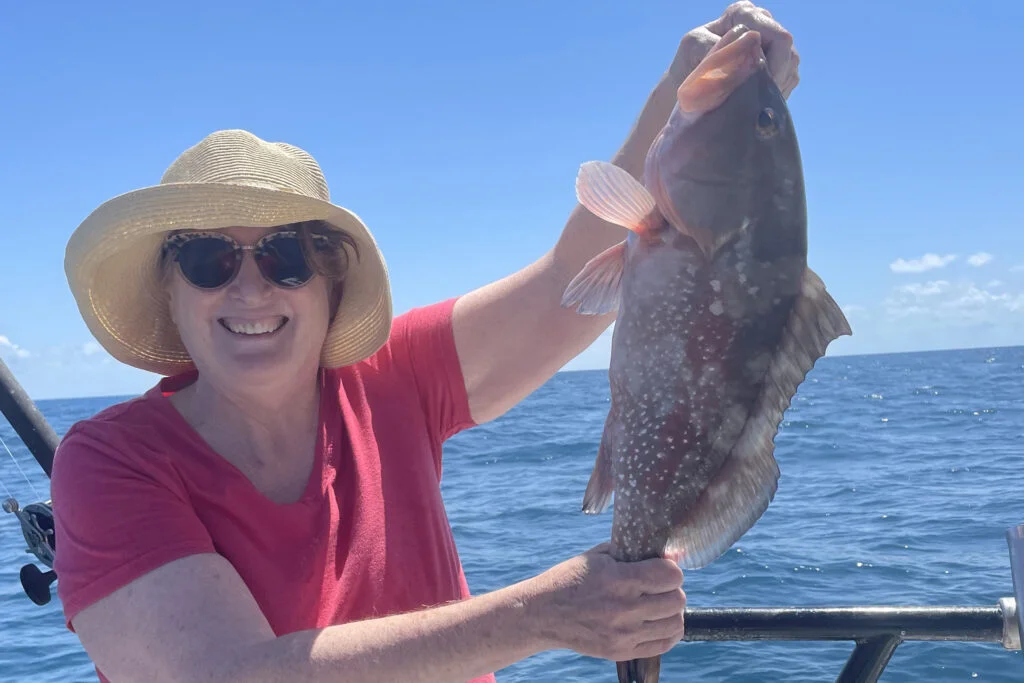
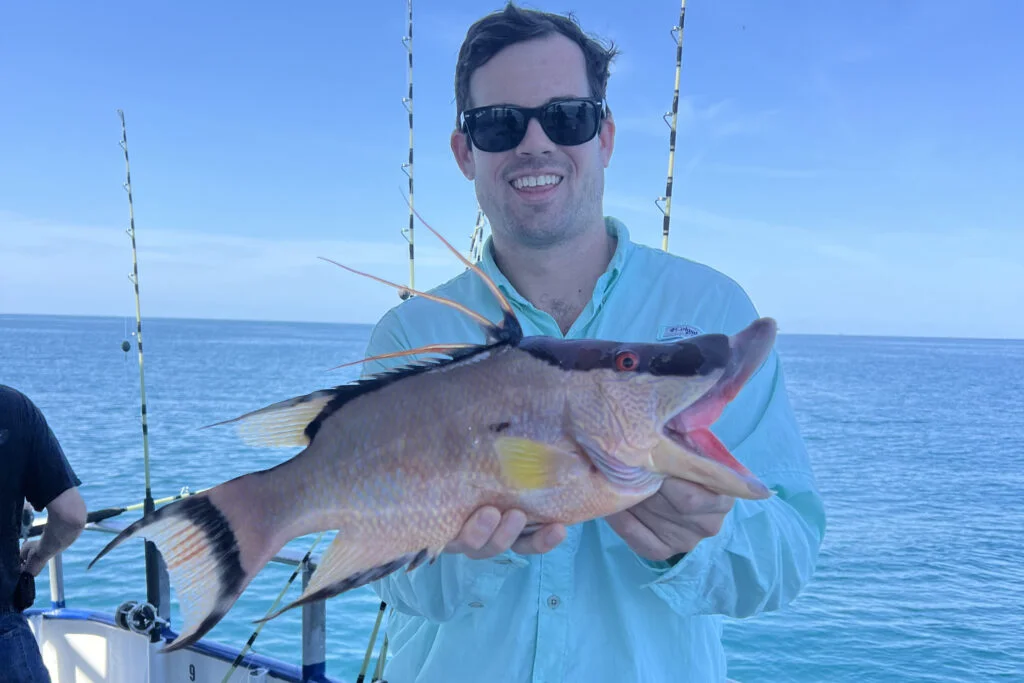
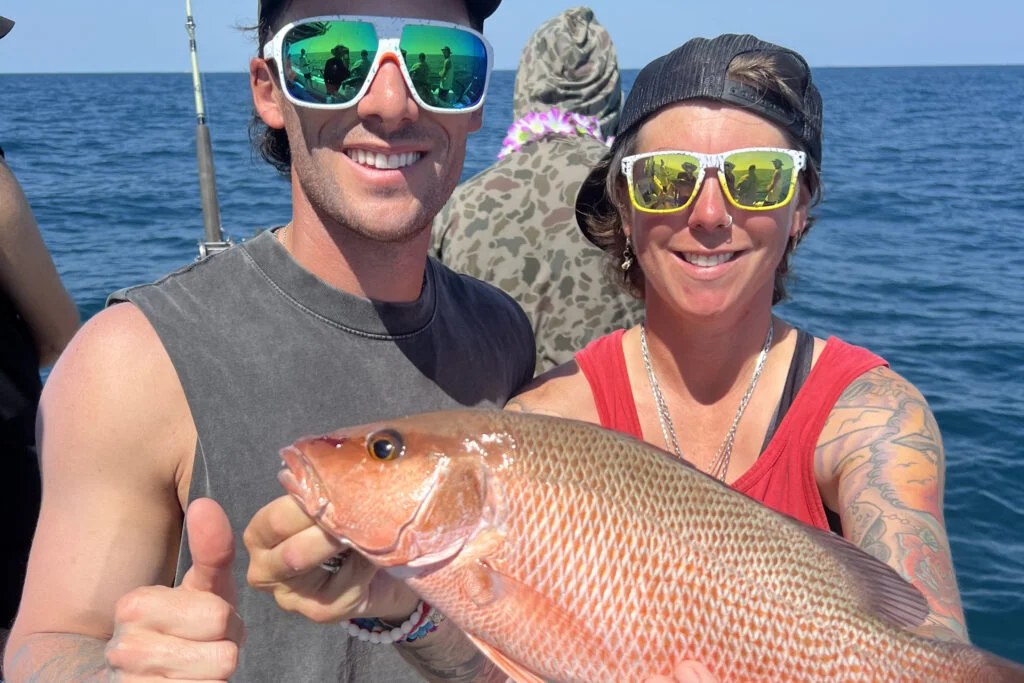
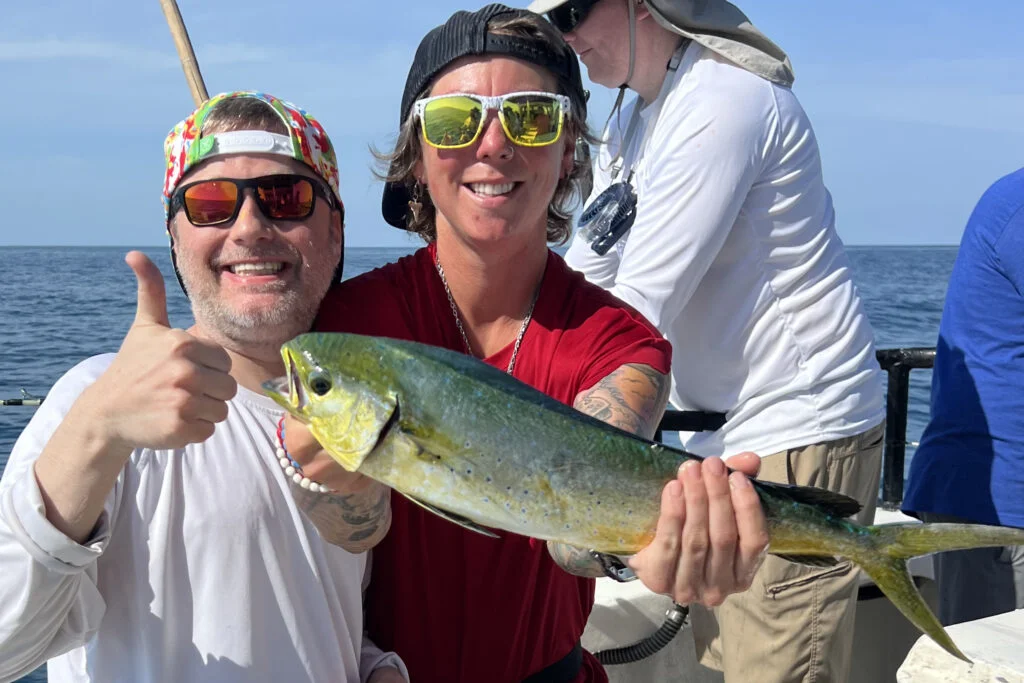
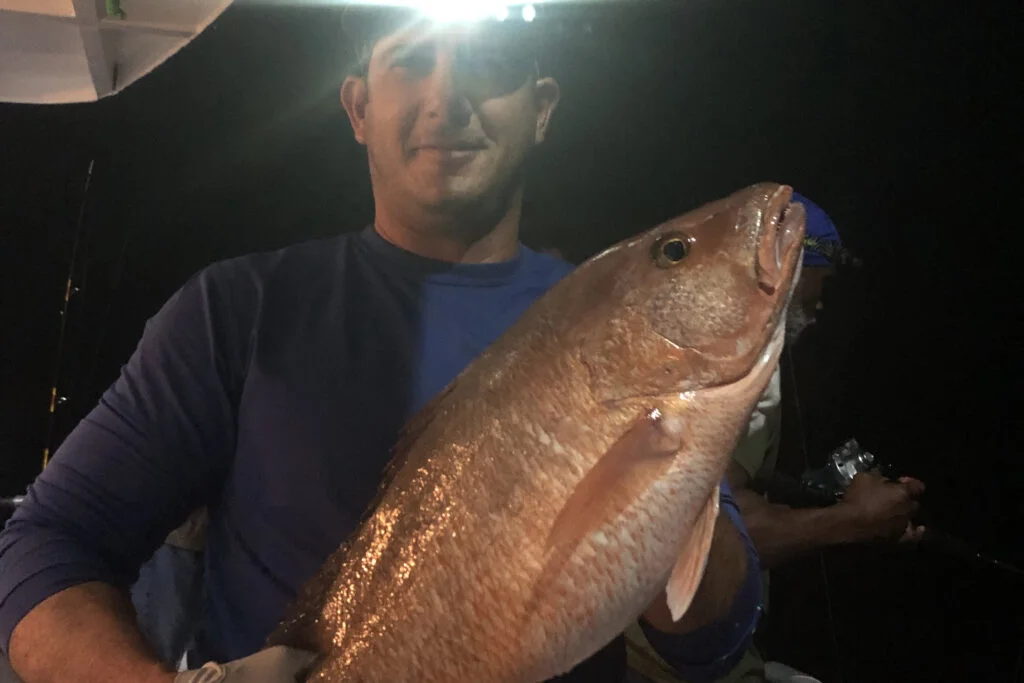
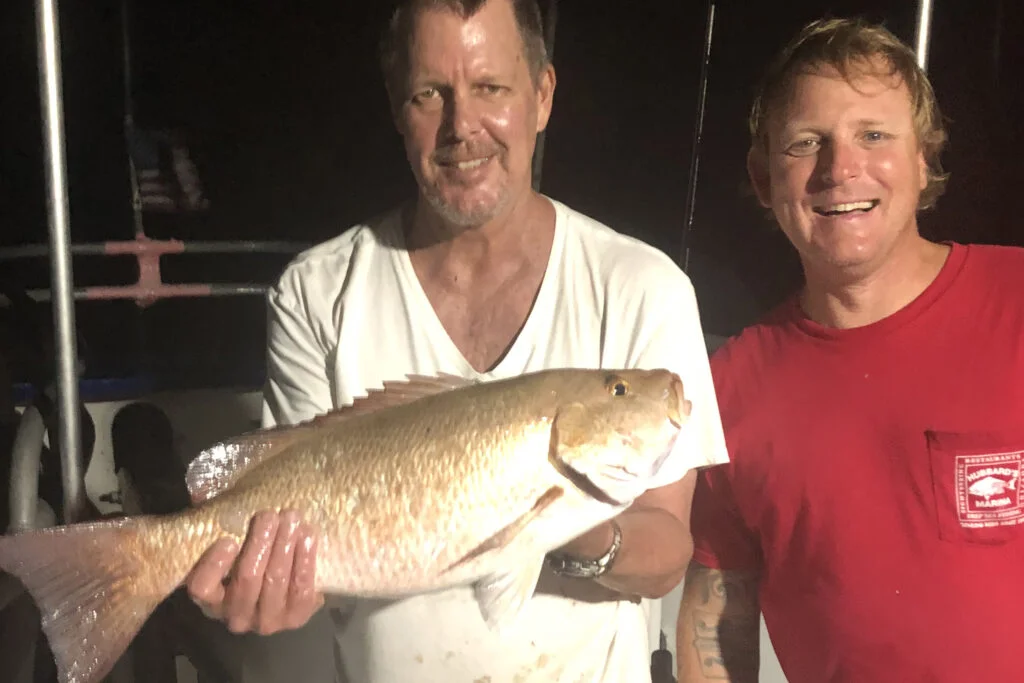
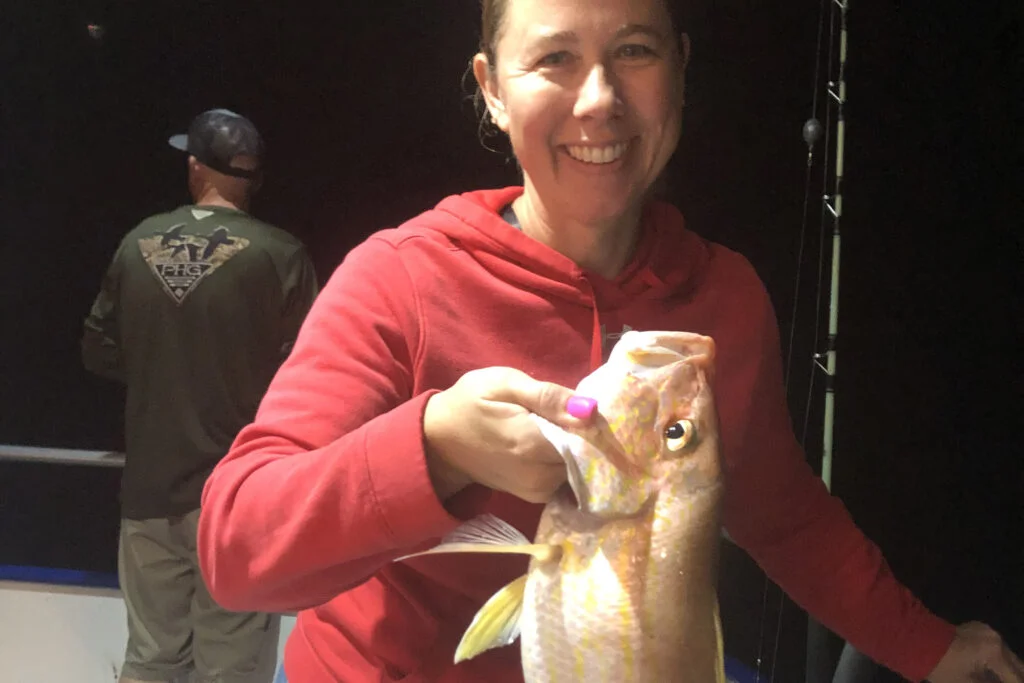
Lane snapper are hot right now, especially in the 60-100ft range. These aggressive biters are responding to squid, shrimp, and cut threadfins. Live shrimp are getting the biggest ones. The lane action has been fast and steady for most trips.
Mangrove snapper are being found in greater numbers in the deeper near shore areas. Chumming helps get them active, and small chunks of cut bait fished on light tackle and fluorocarbon leaders are key.
Red grouper are still being caught in our deeper near shore spots. Target hard bottom, ledges, and potholes with larger dead baits or live pinfish.
Spanish mackerel are thick and feeding ferociously. Troll spoons or use flashy jigs to get in on the action. However, they have thinned out a bit now that waters are so warm. The kingfish have nearly disappeared, we still see one or two around but mostly offshore where water is occasionally got cooler currents
Fishing Tips
- Red Grouper: Target the deepest near shore waters with big dead baits or solid live baits. Use 60 lb test and 7/0 hooks for best results.
- Red Snapper: Use big dead baits like whole squid and bonita strips with heavy tackle to focus on larger fish. Prime trips include the 12-hour extreme, 39-hour, and 44-hour trips.
- Scamp Grouper: Use small to medium pinfish and cut threadfin, especially while targeting mangrove snapper.
- Mangrove Snapper: Near shore, use live shrimp and small chunks of threadfin on 30-40 lb test with 3-4/0 hooks. Offshore, use bigger chunks of cut threadfin or medium pinfish on 40-60 lb test with 5-7/0 hooks.
- Vermillion Snapper: Start around 100 feet of water using cut squid or threadfin. These fish are aggressive and not leader-shy.
- Yellowtail Snapper: Use shrimp, cut squid, and threadfin.
- Pelagic Species: Keep flat lines and pitch rods ready for sailfish, kingfish, wahoo, tuna, and mahi mahi.
Offshore Fishing Report
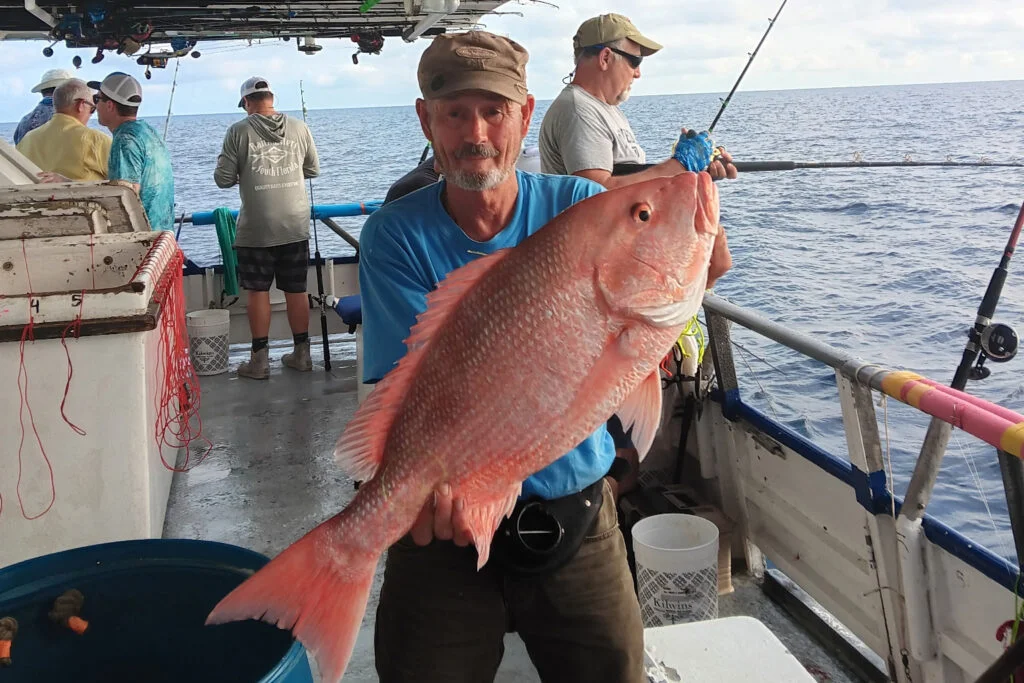
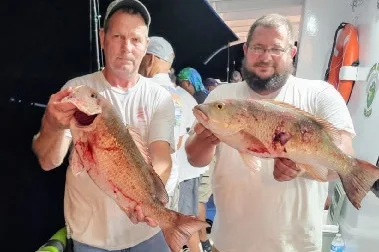
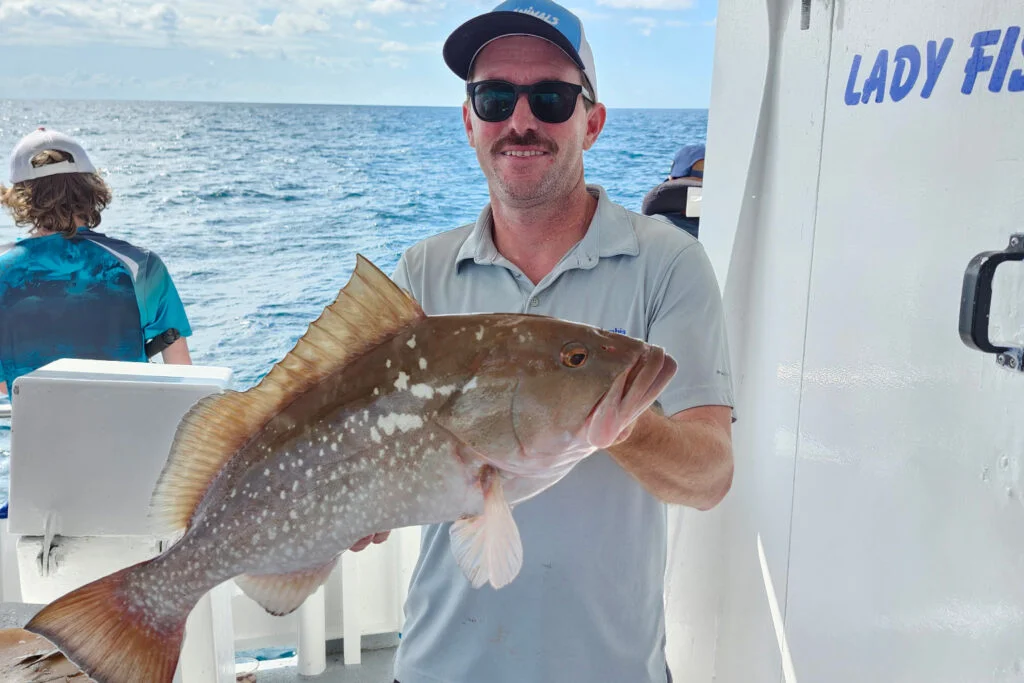
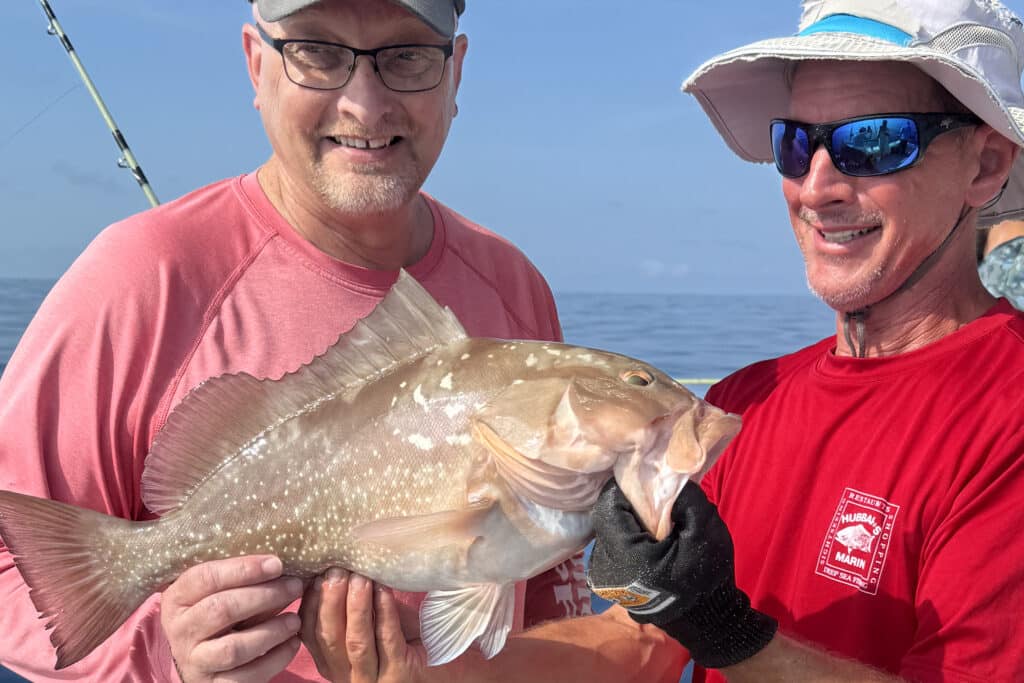
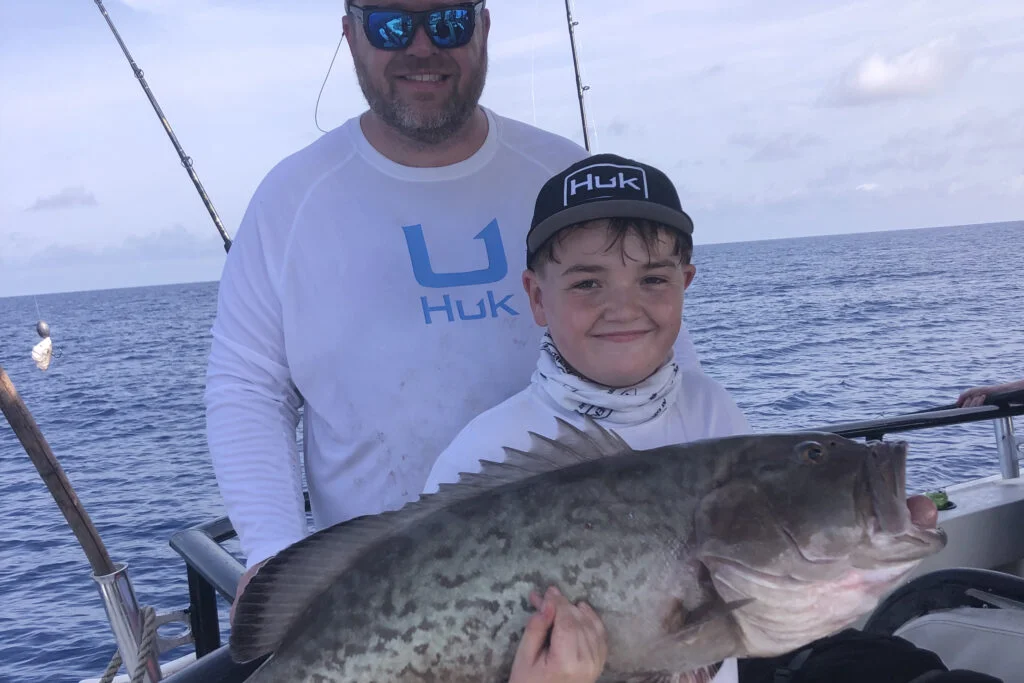
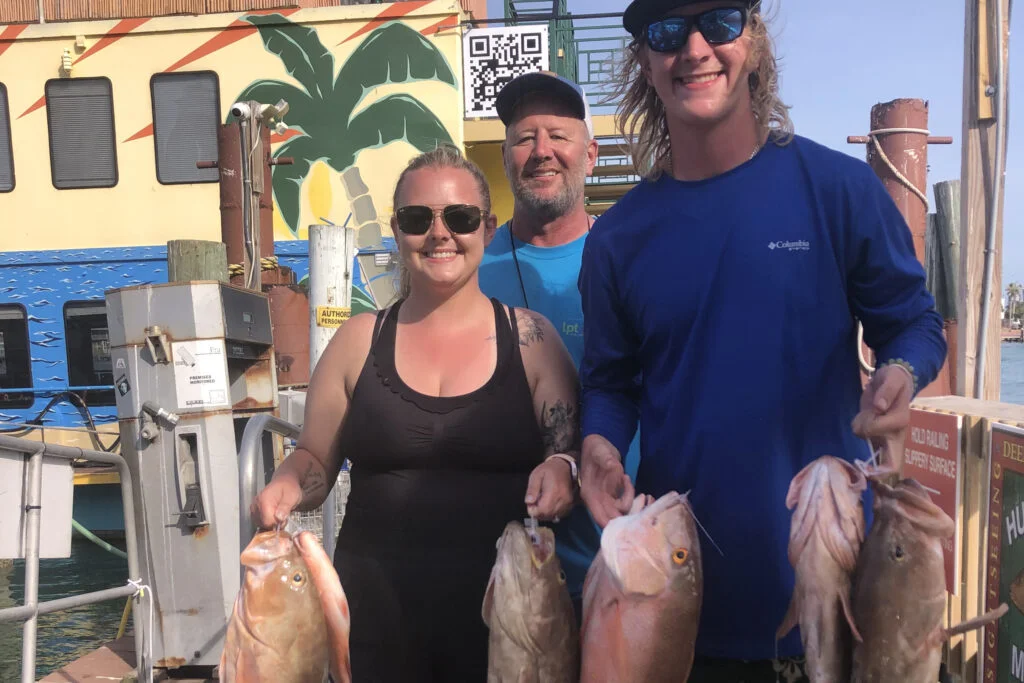
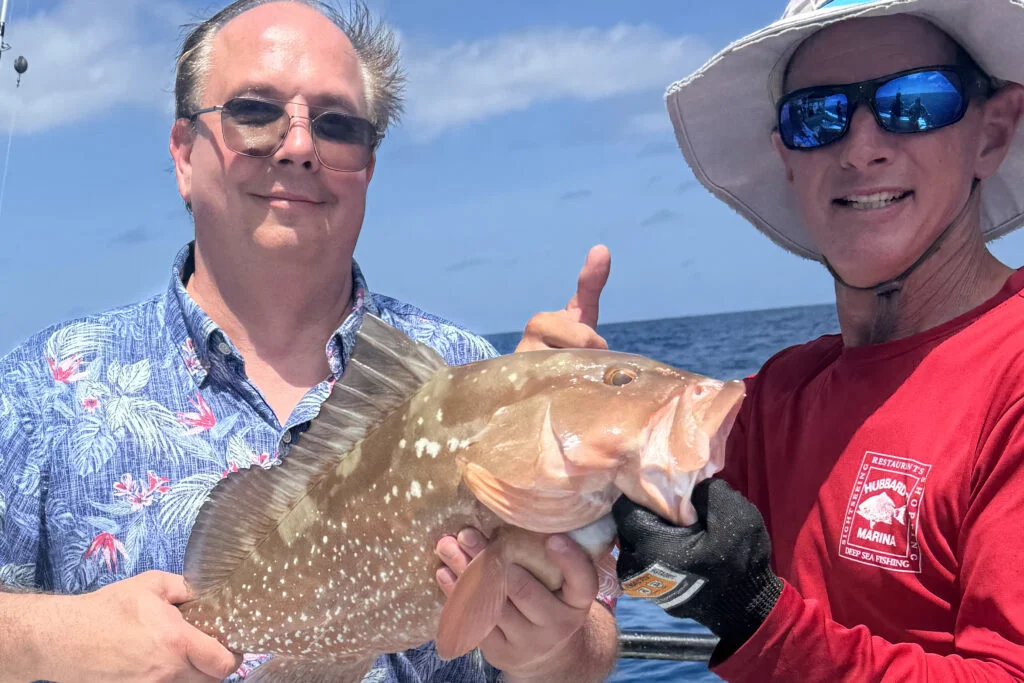
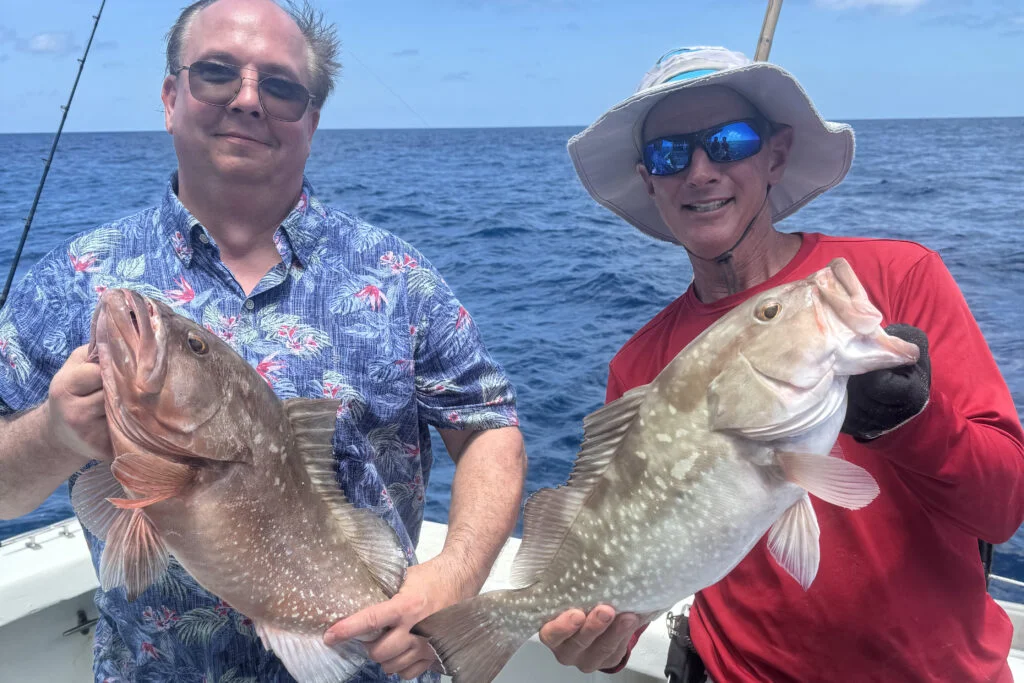
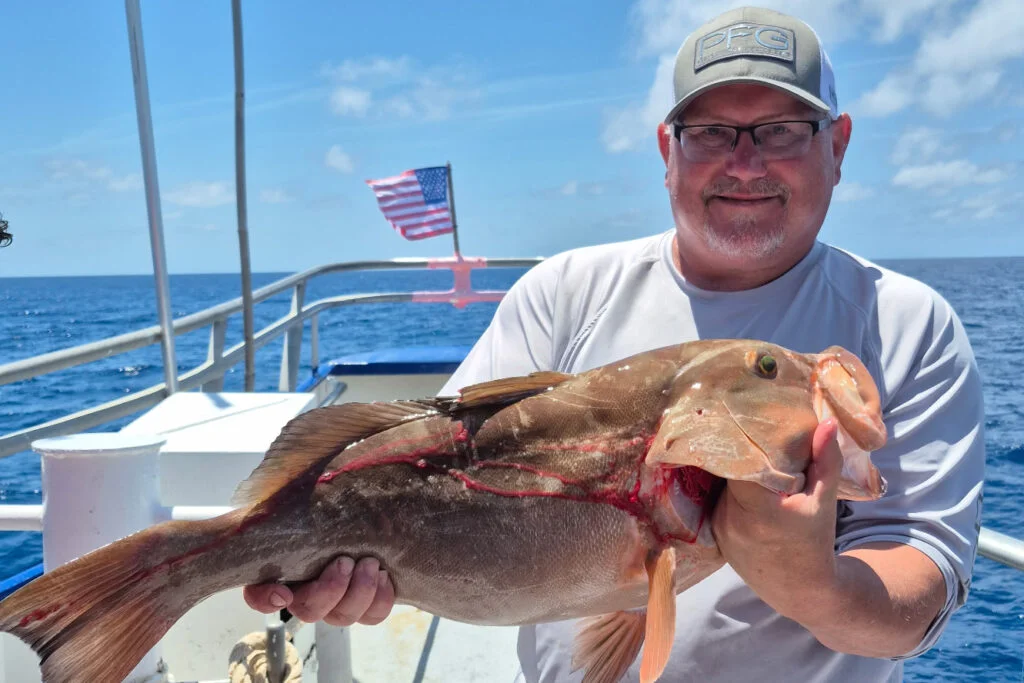
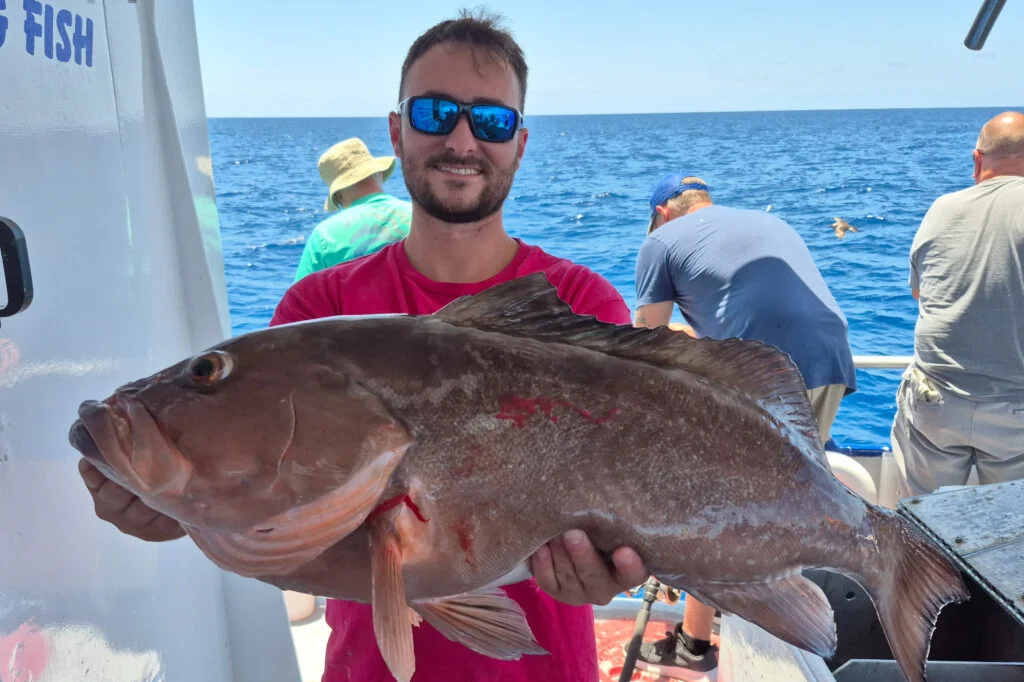
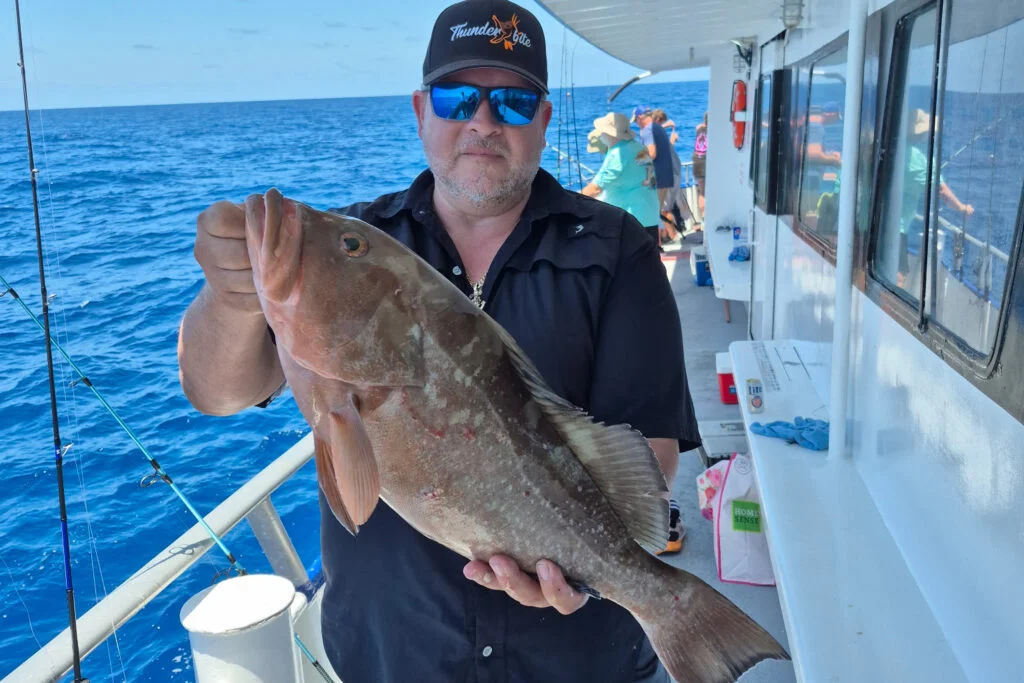
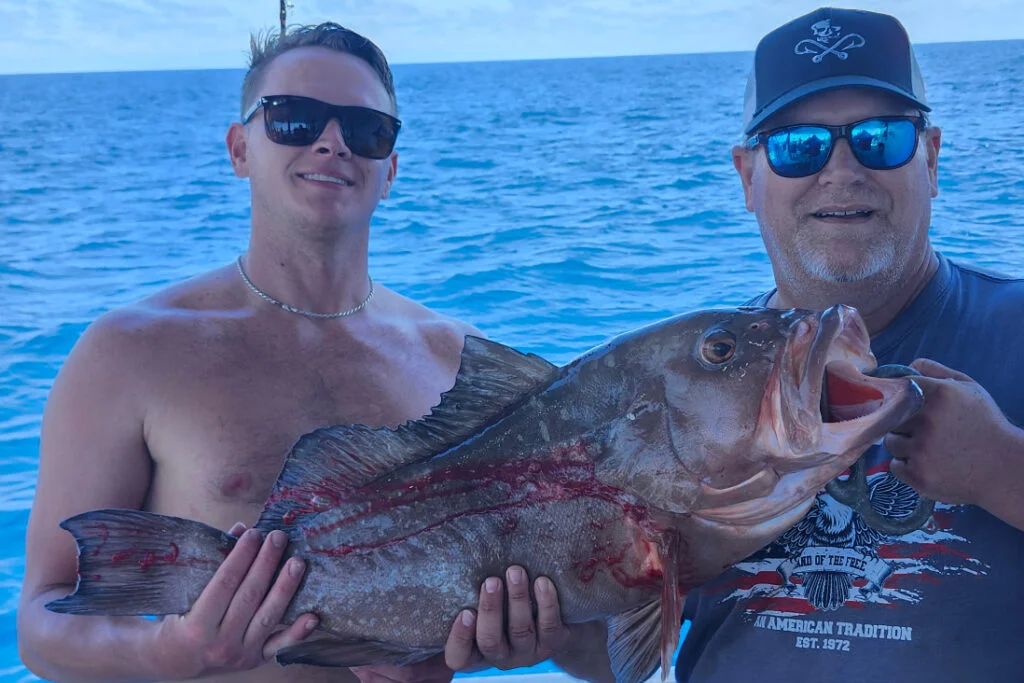
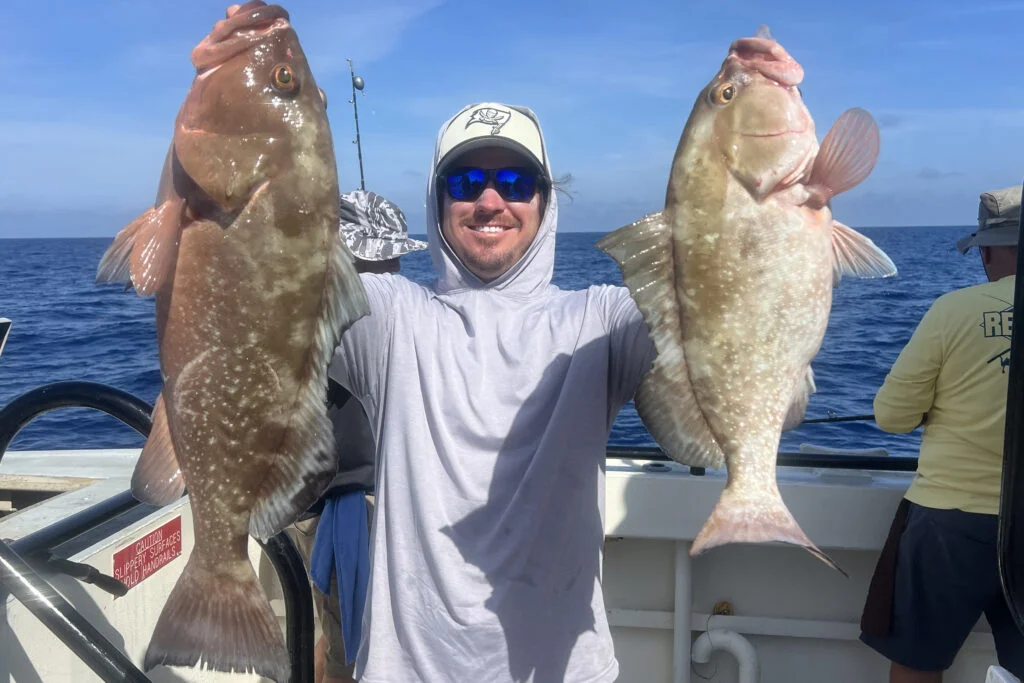
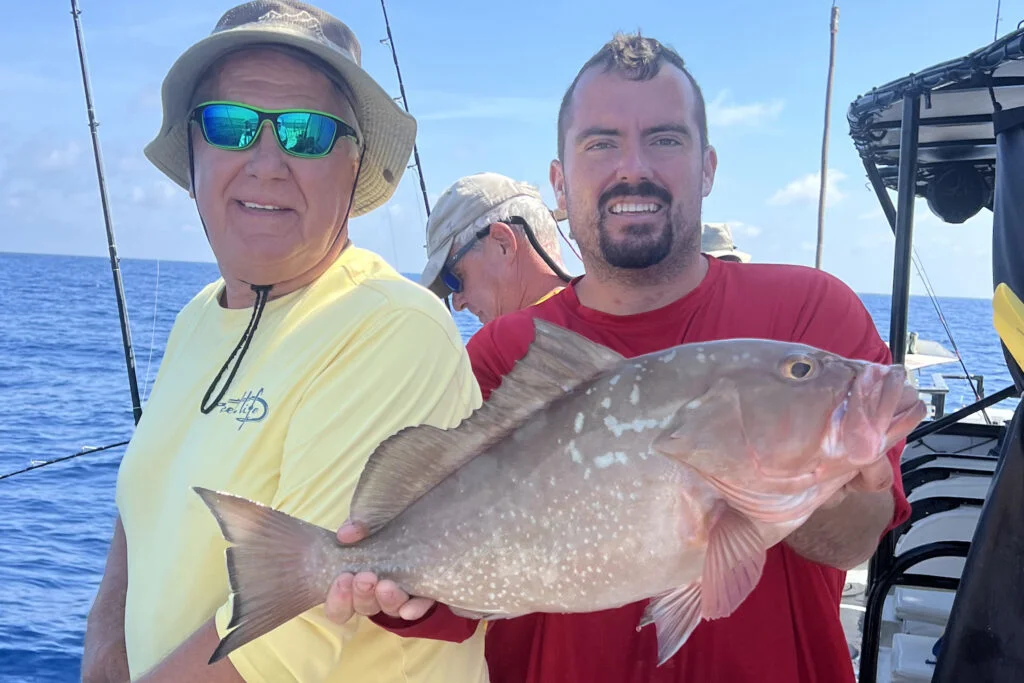
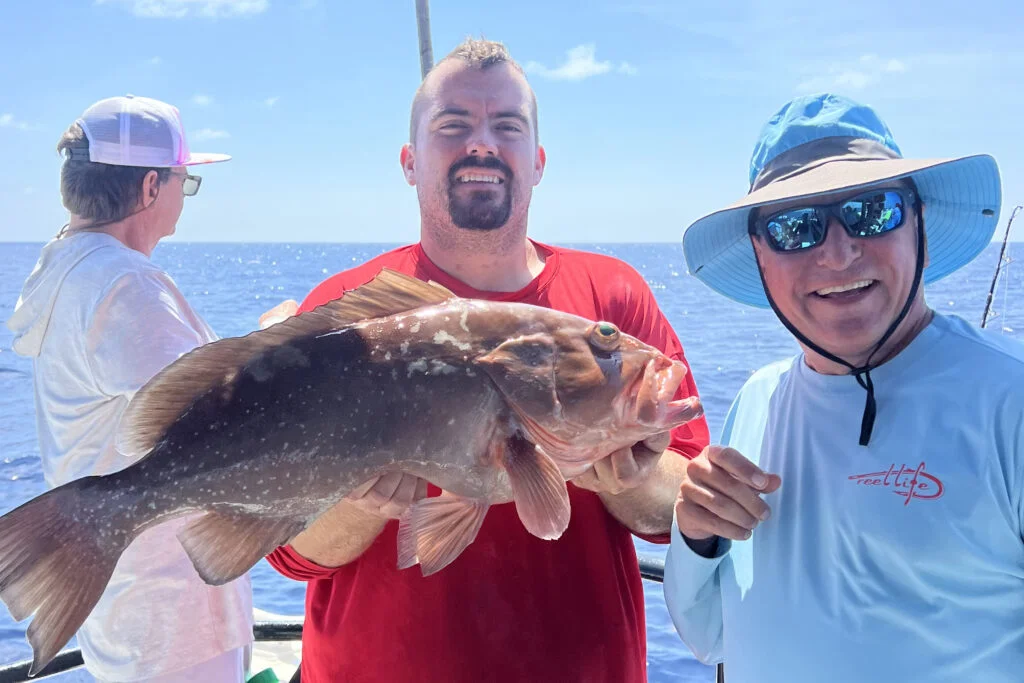
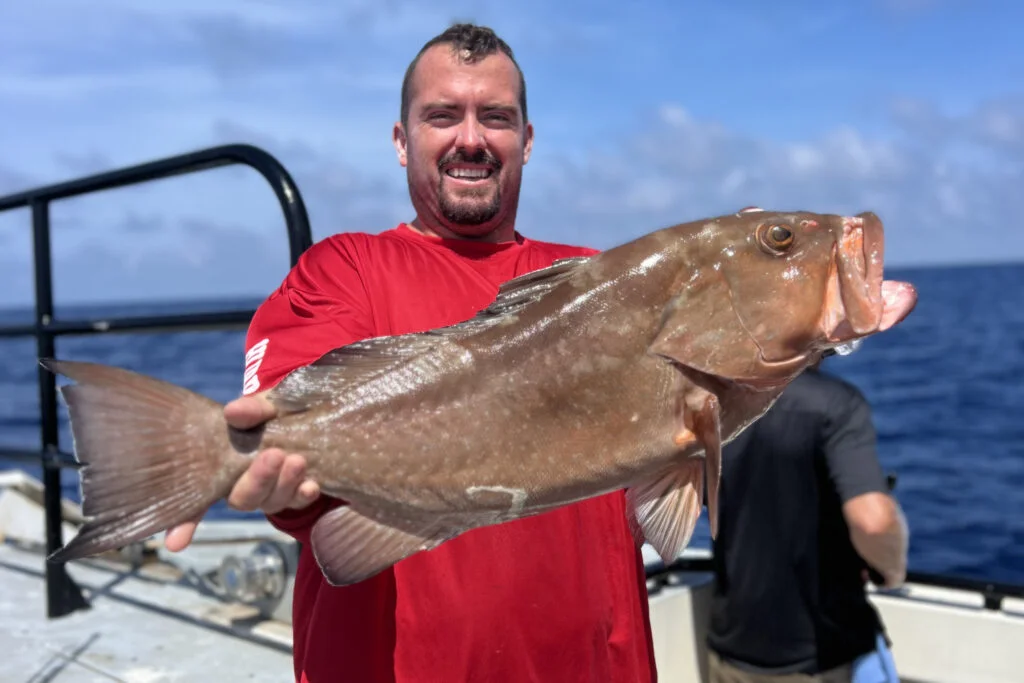
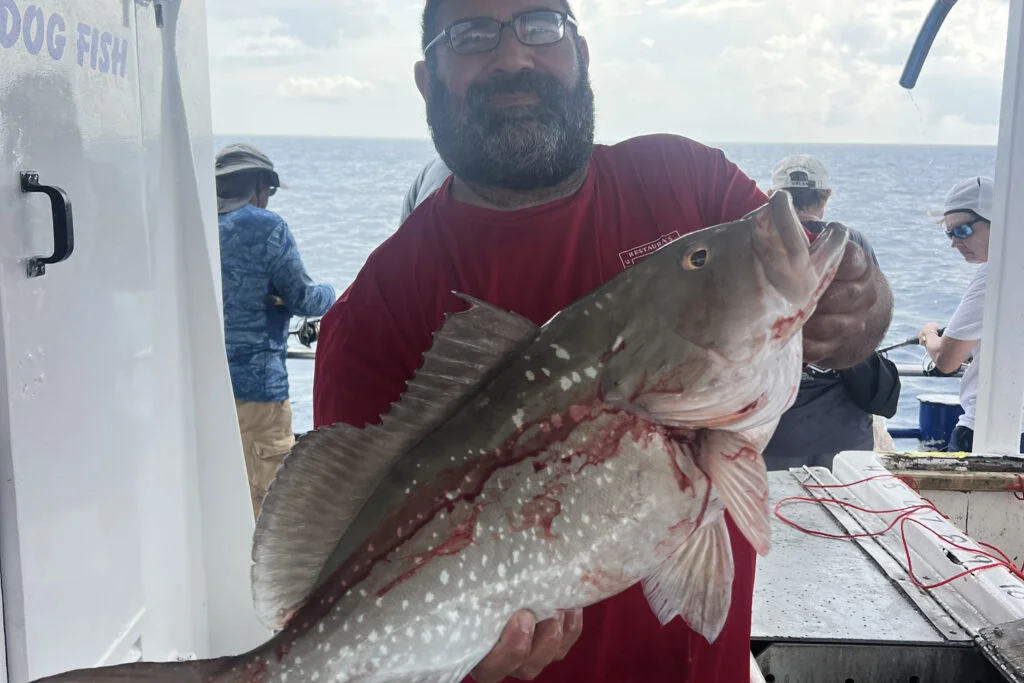
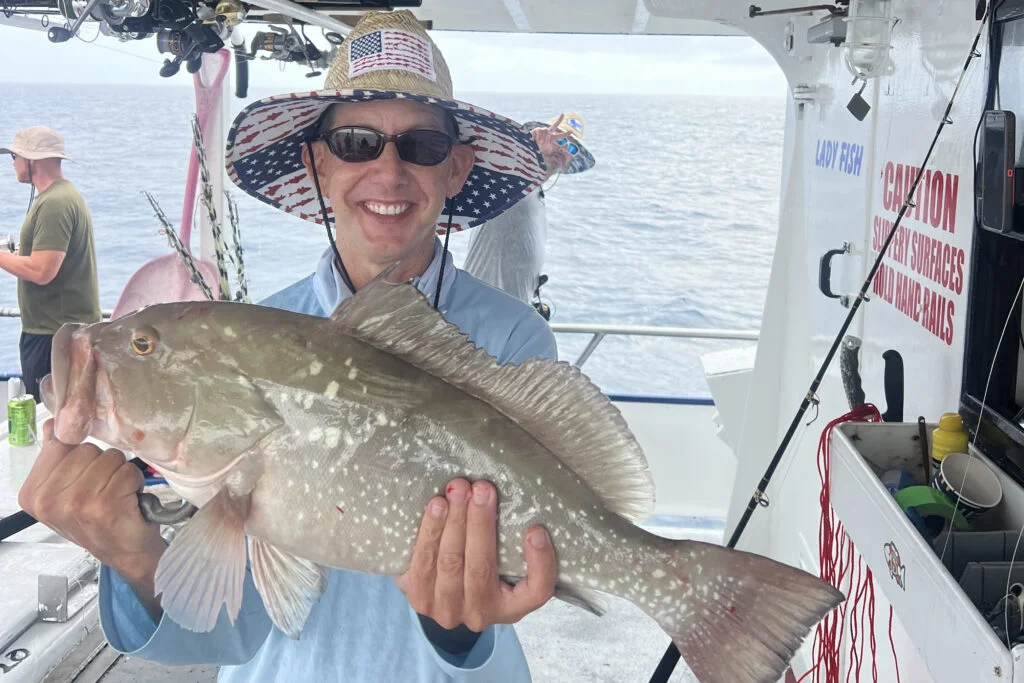
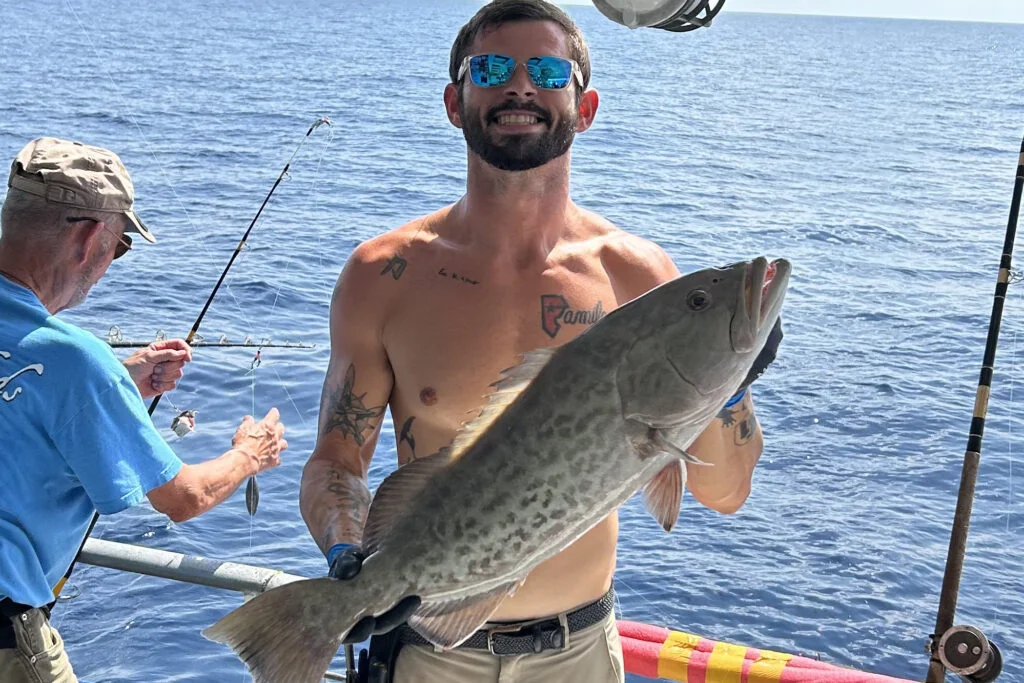

It’s red snapper season for private recreational anglers this weekend, so be sure to double-check regulations if heading offshore on your own boat.
Red grouper are still biting well around 100-180ft of water, especially on large cut baits and hefty live baits. Focus on hard bottom areas, ledges, and broken structure.
Triggerfish are open and being caught consistently. Use small, tough baits like squid strips and target them in that same depth range. Just keep in mind they close for two months starting June first!
Lane snapper continue to be aggressive and widespread, and we’re seeing strong numbers offshore too. These fish are a reliable addition to any catch.
Mangrove snapper are going strong offshore with the larger fish falling for live pinfish and double-snelled cut threadfins. The bite can get hot around the moon phase.
Pelagic action has been heating up offshore with blackfin tuna, a few kingfish, and even the occasional wahoo coming in. Flat lines, vertical jigs, and trolling plugs are working well.
Seasonal Openings:
Red grouper are open Jan 1st and should remain open until end of may
Triggerfish are open all year EXCEPT Jan, Feb, June, & July
Amberjack are open September & October
Red snapper are open June 1st through august and perhaps even a bit longer!
Gags will open most of the month of September
**all other species are open all year**
Remember that when fishing in deeper nearshore and offshore federal waters, the Descend Act requires you to have a descending device or venting tool “rigged and ready.” If you know how to use a venting tool, keep it prepared. If not, here’s some helpful advice: https://bit.ly/3L5HTnv. Using a descending device is straightforward and doesn’t require as much precision or practice as venting. You can even get over $100 worth of descending device gear for free by taking a short course on barotrauma mitigation, which helps more fish survive. The course only takes about 10-15 minutes, and you can learn valuable techniques to protect our offshore fishery. Spread the word by visiting: https://returnemright.org/.
TERMS OF REFERENCE-
Inshore: This covers the areas from the inner bays, through the bridges, and right up to the beaches.
Near Shore: This includes the coastal waters from the beaches up to twenty miles offshore, or up to a depth of 100 feet.
Offshore: This extends from twenty miles offshore or from a depth of 100 feet and beyond.
For more fishing reports, photos, videos, and other content, check out Hubbard’s Marina on Facebook, Instagram, YouTube, TikTok, Twitter, Pinterest, or Snapchat by searching for @HubbardsMarina. Remember our family motto: “If you’re too busy to go fishing, you’re just too busy!” Thank you for reading our report.
Capt. Dylan Hubbard, Hubbard’s Marina
Phone or text: (727) 393-1947
Website: Hubbard’s Marina

